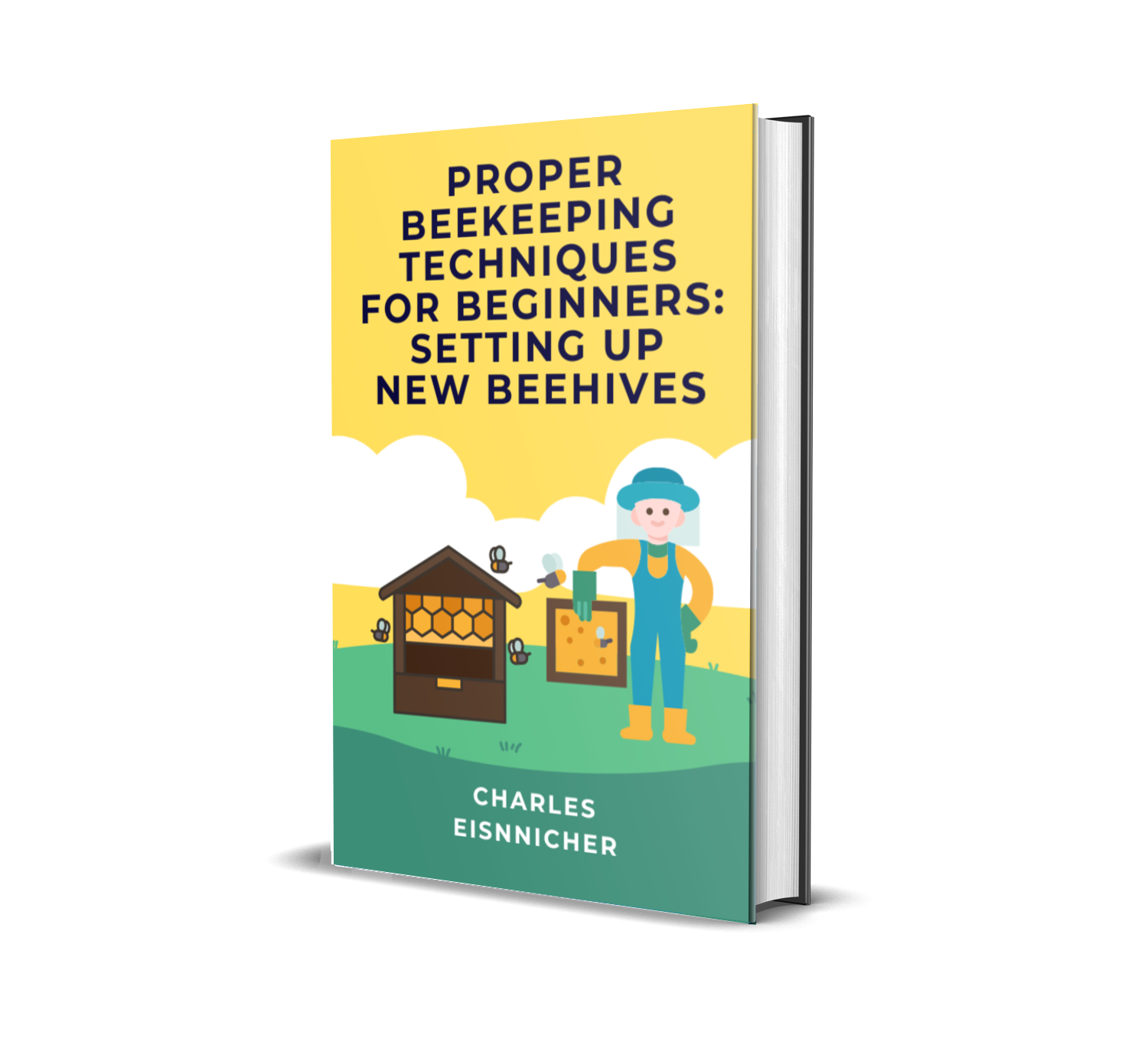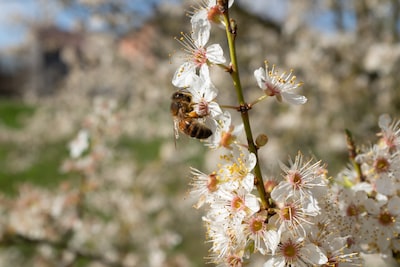Dadant beekeeping is a popular and successful form of beekeeping that has been around for many years! This age-old craft involves the use of specially designed hive boxes, frames, and other components that work together to provide ideal living conditions for bees. Dadant beekeepers are typically knowledgeable and experienced beekeepers, who understand the importance of creating an environment that encourages the health and productivity of bees.
With proper care and attention, these beekeepers can enjoy the rewards of a rich, thriving bee colony all year.
Are you looking to get a start in Dadant beekeeping? This article will be your guide to introducing Dadant beekeeping into your life and garden. We’ll look at the basics of Dadant beekeeping, its advantages and disadvantages, and the necessary equipment you’ll need to purchase to set up your first Dadant hive.
Finally, we’ll discuss how to select the right Dadant bees for your apiary and colony. It will take hard work and dedication, but you can be a successful Dadant beekeeper with the right information and know-how.
Read on to discover the secrets of Dadant beekeeping.
Table of Contents
Research Your Local Regulations – Understand the beekeeping regulations in your local area.
Beekeeping is a fun and rewarding hobby or business, but you must also research and understand the local regulations in your area before you get started. While most places allow beekeeping, there may be permitting or licensing requirements, limits on the number of hives allowed, and zoning mandates that specify where hives can – and cannot – be located.
To ensure that you are compliant with the regulations in your area, contact your local county or state Extension office for the most up-to-date information. Additionally, researching the regulations down to the local government level is strongly recommended for an accurate assessment.
Select the Appropriate Bees – Consider what type of bee species and breed is best suited to your environment.
When selecting bees for your environment, there are a few key things to consider. First, the geographical location must be taken into account – some bee species and breeds will be hardy in colder climates whereas others are only suitable for warmer climates.
Additionally, the bee species and breed should be tailored to the environment, i.e. bee management and beekeeping practices should be adapted to the local weather and climate conditions. Furthermore, the availability of forage should be considered when choosing the bee species and breed.
Make sure to select bees that are well-suited for the local nectar sources; otherwise the bees may struggle to produce enough honey to sustain the colony. Finally, the presence of other bee species in the environment must be taken into account; selecting a bee species and breed for your area that is healthy, resilient, and native is essential to ensure long-term bee health and success.

Get A Free Downloadable Ebook To Teach You How To Set Up New Beehives
Give Me My Free eBookSource Reliable Supplies – Once you’ve chosen the right type of bees, find trusted sources of everything you need.
Once you’ve decided on the best kind of bees for your situation and needs, it is important to obtain all necessary supplies from reliable sources. Not only should the quality of supplies be trustworthy, but also look for established experts with expertise and knowledge in using the supplies.
From housing to feeders to protective clothing, finding producers that provide high-quality items will ensure your bees are provided with the essentials to promote their health and well-being. Once you have acquired these basic items, be sure to establish a relationship with a reliable queen producer to obtain the right queens when needed.
With a trustworthy source of supplies and support, you’ll experience more success within the world of beekeeping!
Arrange Your Environment – Set up their environment to maximize their chances of survival and create the ideal habitat.
Arranging your pet’s environment properly is essential for establishing an optimal living space. With some simple steps and considerations you can maximize the chances of their survival and provide the ideal comfort and safety.
Take into account the size of your pet, the time it will spend in the environment, and any specific needs they may have. Additionally, identify which items may be used in the environment and choose the appropriate material to construct them, being mindful of temperature and humidity levels in the space.
With careful planning and conscious decisions, your pet will not only be more likely to survive, but thrive in their environment.
Introduce Your Bees – Learn best practices when introducing your bees to their new home.
When introducing a new colony of bees to their new home, there are a few best practices to be aware of. Start by making sure the hive is firmly situated in its new location, with all of its internal pieces correctly placed.
Then, when releasing the bees from their travelling container, keep the hive open for 10 to 15 minutes to allow the bees to disperse and orient themselves to their new environment. Then, close and secure the hive entrance before the sun sets.
Make sure the environment is suitable for bees, and that the hive is placed in an area that is not overly windy or hot. Finally, to ensure that the hive remains healthy over time, regularly check for signs of pests, diseases, or other problems.
With these easy steps, your bees can quickly settle into their new home and start the pollinating process.
Care and Maintenance – Understand how to properly care for your bees.
Properly caring for bees is essential for good colony health resulting in increased honey production. To keep your bees healthy and productive, regular inspections of your hive should be conducted and any ailments should be treated immediately.
For example, the hive should be checked for parasites such as Varroa mites—an external parasite found in bee colonies that harm both adult bees and larvae. Additionally, the hive needs to be given adequate ventilation and the correct amount of space for the population of your bees to ensure proper temperature control.
In cold climates, it may be necessary to use additional insulation. It is also important to provide bees with a safe and sufficient food source throughout the fall and winter months, as food will be scarce during these times.
To guarantee the longevity of your hive, practice beekeeping methods that are sustainable. Lastly, look out for signs of bee swarm and know how to approach them appropriately.
By following these simple tips, you can give your bees the best chance of succeeding and maintaining a healthy colony.
Monitor Bee Colony Health – Learn how to recognize signs of healthy and unhealthy hive conditions.
A healthy honeybee colony is essential for pollination and subsequent plant production and is an indicator of ecosystem health. To monitor bee colony health, one must be attuned to recognizing signs of both healthy and unhealthy hive conditions.
Look for adequate stores of honey, young bees, and brood development, as well as other indicators such as active and desirable behavior among the colony’s worker bees. Conversely, look for reduced honey stores, diseased bees, as well as evidence of mite or pest activity.
By keeping tabs on these dynamic indicators, beekeepers can ensure their hives remain healthy and productive.
Harvesting Honey and Wax – Discover the art of carefully obtaining honey and wax from your beehives.
Harvesting honey and wax is an art form that requires careful consideration and attention. It is often a delicate process where beekeepers carefully take honey and wax from their beehives in a way that causes minimal disruption to the bees.
The process involves ensuring that the combs of the hive are unscathed and that the bees can go about their business as the beekeeper collects the sweet stuff. Beekeepers will use a series of strainers, uncapping tools, and wax melters to successfully collect the honey and wax.
Once extracted and separated, the final product is luscious honey and beautifully crafted wax ready for use!
Stop the Spread of Disease – Implement protocols to protect your colonies from pests and diseases.
In order to protect your colonies from pests and disease, effective implementation of protocols is essential. Protocols may include quarantine and screening of pests, ensuring that pests are limited to their original location, regular monitoring of colonies, and removal of any pests found in the colonies.
Regular cleaning and sanitation of the colony environment is also important, as is the use of protective clothing and equipment where appropriate. Additionally, it is important to create a buffer zone between colonies, ensuring that susceptible species are never too close together.
Finally, a careful pest management program should be developed and implemented, in order to stop the spread of disease.
Knowledge is Power – Continue to educate yourself on the best beekeeping practices.
Knowledge is power, and a key part of becoming a successful beekeeper is to continually learn and update your skills. Staying informed with the latest discoveries in the beekeeping realm is a must if you want to keep your hive healthy and productive.
Taking an online course, watching how-to videos, or joining an apiary group or association are all great options for continued beekeeping education. Consider attending beekeeping conferences, as well, where you can network with experienced beekeepers and pick up valuable tips and tricks.
With each season, there are potential new threats and other challenges that your hive may face, so staying informed and knowledgeable can help make sure your bees stay safe and your honey harvest is plentiful.
Final Thoughts
The Dadant Beekeeping method may be relatively more complex and demanding but with patience and practice, the rewards are incredibly sweet. To be able to understand these valuable creatures that provide us with a very important resource, and to be able to keep them alive and thriving, is a precious opportunity that cannot be undervalued.
Read up on the Dadant Beekeeping method and strive to be a responsible beekeeper, it is certainly worth the effort.
Charles

Get A Free Downloadable Ebook To Teach You How To Set Up New Beehives
Give Me My Free eBook








